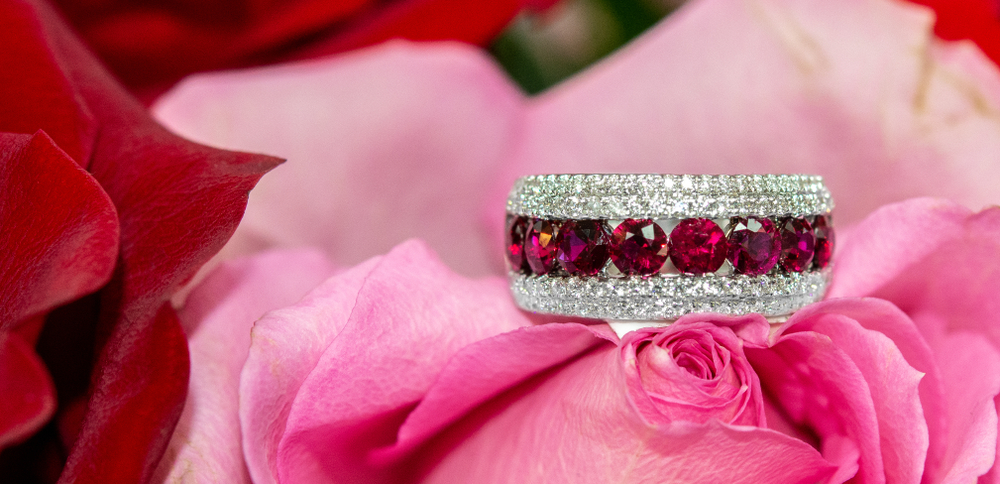July Birthstone Ruby
July Birthstone Ruby is among the most coveted gems in the world. They have an intense red shade that feels synonymous with royalty. Their hardness that registers as a nine on the Mohs scale, topped only by the diamond. In Sanskrit the ruby is known as ‘Ratnaraj’ or ‘King of Precious Stones,’ but the English word ‘ruby’ comes from the Latin words ‘Rubens,’ ‘rubrum,’ and ‘ruber,’ which all mean red.
Rubies are Red
The most valuable rubies in the world are the ones with the most vivid color red. The color forms out of the mineral corundum colored by chromium, commonly found in Burma (now Myanmar). Upper Burma’s Mogok Stone Tract produces the world’s most vivid, deeply-colored rubies, known as “Pigeon’s Blood Rubies.” Places that can generate rubies have little to no iron. Iron dilutes the red color and allows the stones to absorb fluorescent light. Fluorescent light is radiation emitted by a substance (chromium, in this case) that has absorbed incident radiation at a short wavelength. Rubies from other parts of the world typically have an orange, purple, or blue tint to their red color. Burmese conditions make for exceptionally red and radiant rubies that give a fiery illusion, which few places in the world can produce. A ruby that does not emit such a vivid red can be heated to eliminate hues of other colors. An unheated, naturally brilliant red holds more value.
Rubies in History
Civilizations have held rubies in high regard since the common era, particularly in Asia. Records suggest that the stones were traded along the Silk Road as early as 200 B.C.E. Several ancient cultures such as the Chinese and Burmese decorated their noblemen and warriors in rubies. Rubies inspired courage, invincibility, and wisdom. Ancient Hindus believed a person would be reincarnated as an emperor if they offered rubies to the god Krishna.
Rubies eventually made their way to the Western world, where they became a symbol of royalty and high social standing. During the Middle Ages, Europeans saw rubies as guarantors of health, wisdom, and success in love and wealth. Medieval Europeans also believed that rubies would darken or acquire a brownish hue as an omen for bad fortune.
Significance of the Ruby
Rubies symbolize passion, courage, and romance. Many precious stones are known for healing or calming properties. Rubies enhance and intensify surrounding energy, making them ideal stones to eliminate fatigue or depression and stimulate the mind. These stones are high energy stones that are known to possess positive, motivating energy and represent forward movement.
Rubies also hold significance in romantic relationships. The most valuable rubies appear to grasp a burning flame inside, which is often equated to the eternal flame that exists within passionate and everlasting relationships. They are the stones of the 15th and 40th anniversaries.
Rubies in Pop Culture
The most famous representation of the precious stones in popular culture is Dorothy’s ruby slippers in the Wizard of Oz. The slippers maintained a long tenure as a central feature in the Smithsonian Institution’s “Icons of American Culture.” It is estimated that four to seven pairs were made for Judy Garland in the filming of the 1939 movie. Though the whereabouts are known for only three—the Smithsonian’s and two privately owned pairs. A fourth is known to be out there somewhere, but they were stolen from the Judy Garland Museum in Grand Rapids, Minnesota in 2005 and have yet to be found. The slippers themselves are covered in shiny red sequins, not actual rubies. Their use in the movie emits much of the symbolism commonly associated with the real gems—courage, passion, motivation, and irrepressible energy.


There are no comments
Add yours